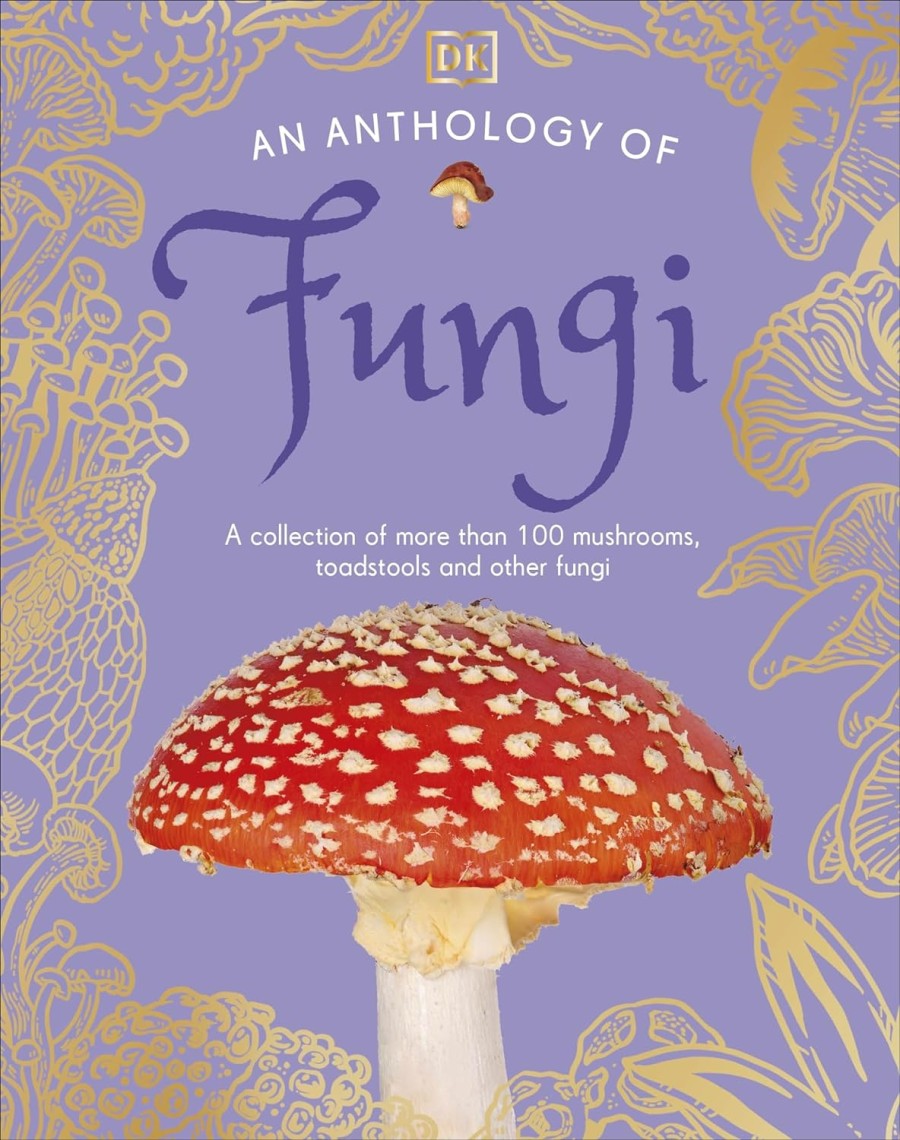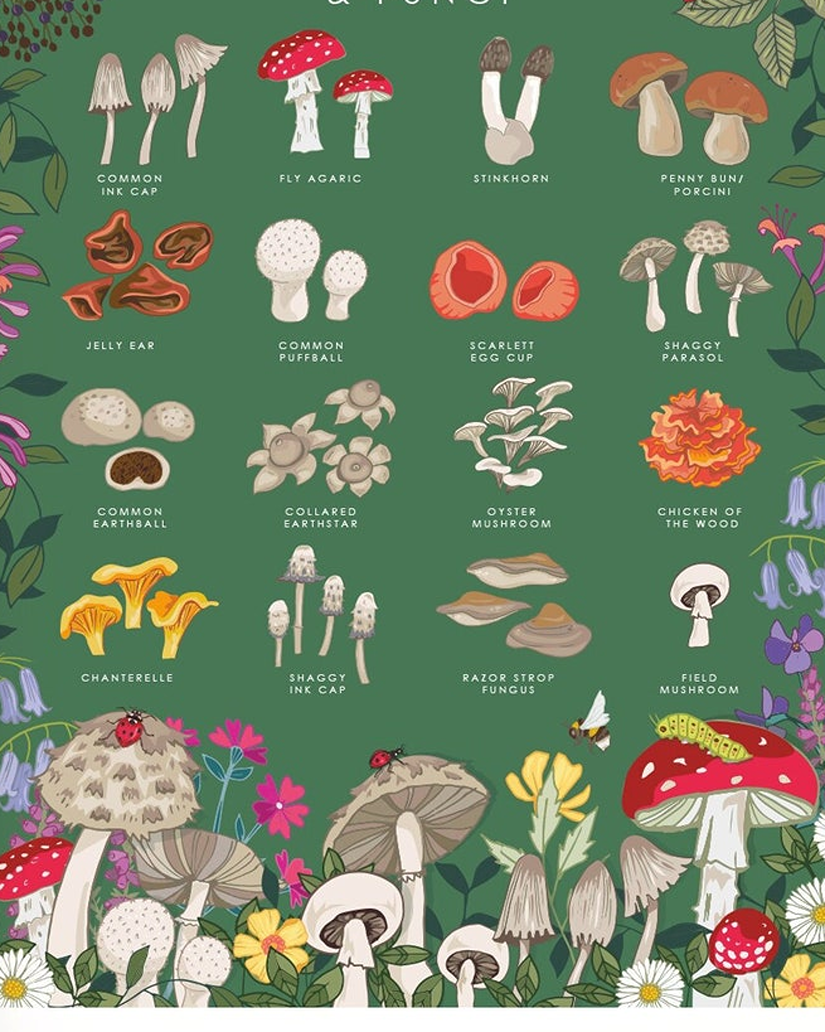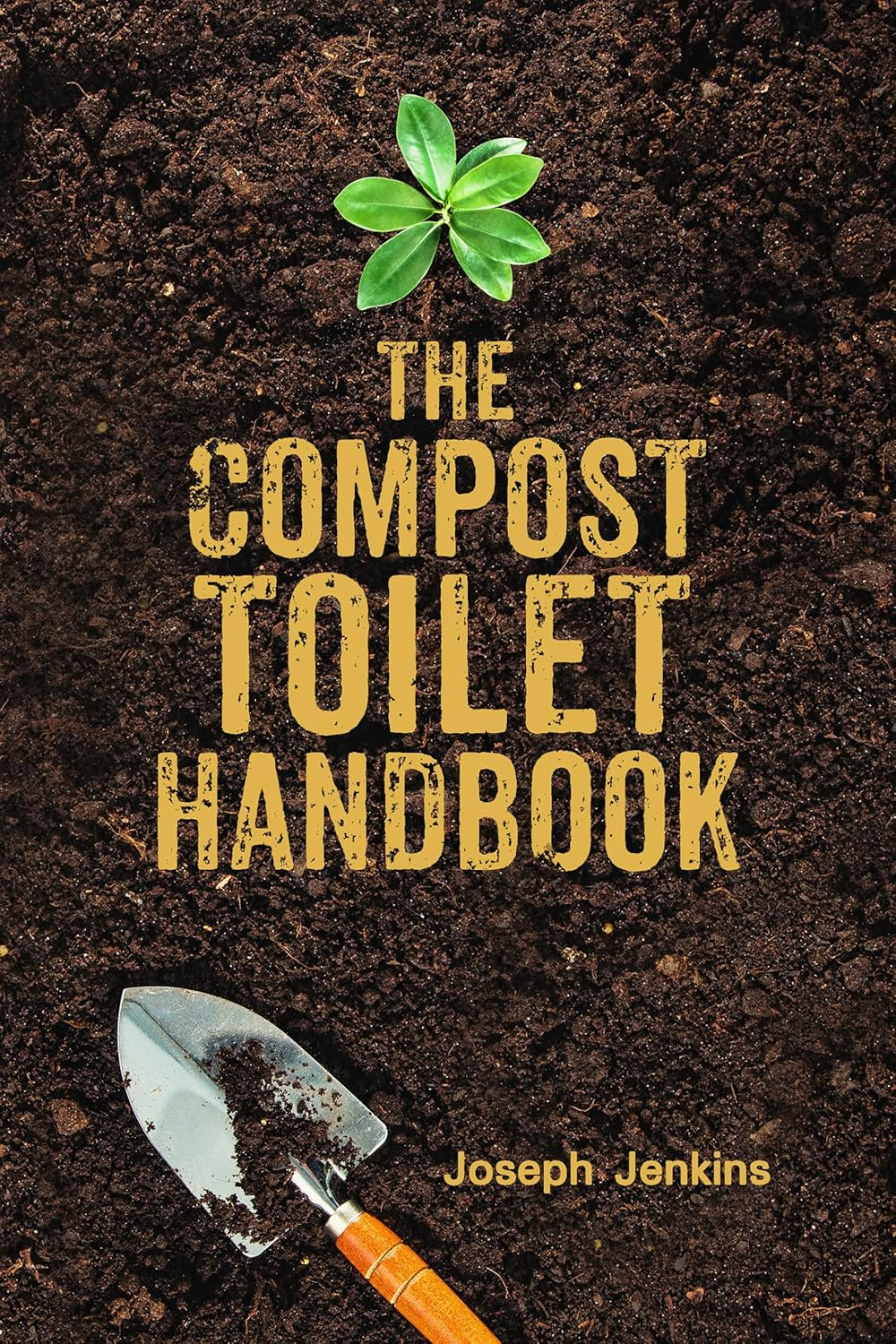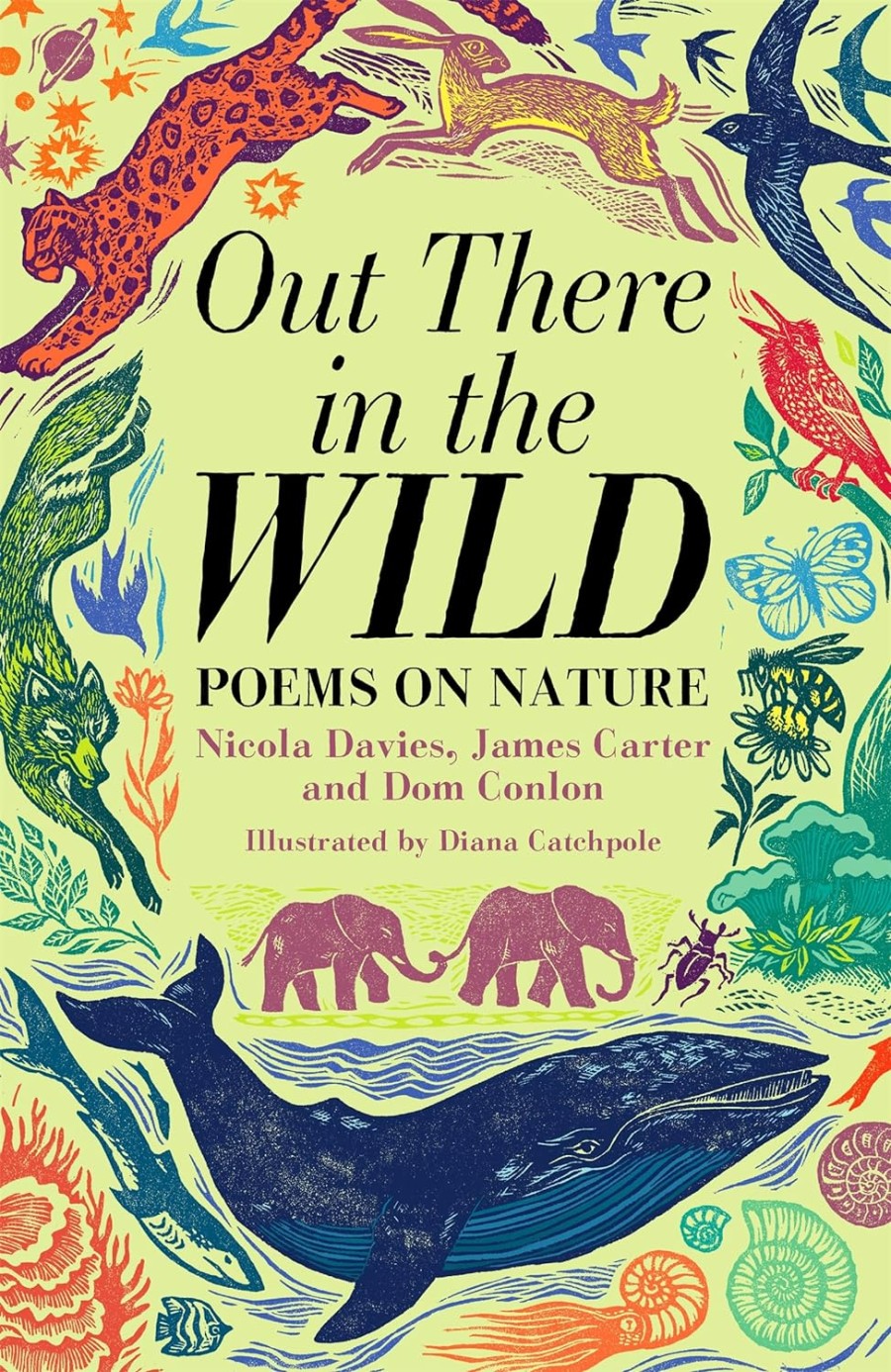A Beginner’s Guide to Mushrooms and Fungi

Mushrooms and Company is a super-interesting book on how marvellous mushrooms (some of them mouldy!) support life on earth. In this book, young readers are deep-dived into the fungal kingdom, and introduced to an incredible array of mushrooms.
England has thousands of types of mushrooms, and you really have to know what you’re doing to eat wild ones. We know button mushrooms but wild mushrooms can look exotic.
Learn how to create pet-friendly gardens and wildlife-friendly gardens (use fruit protection bags over netting). If growing indoors, learn how to stop birds flying into windows.
Explore the fascinating mycorrhizal network that lives and operates under our feet, in sometimes surprising ways.
Without fungi, there would be no penicillin, no bread (at least the kinds that depend on yeast to rise), and no blue cheese!
Of course, some fungi can be dangerous—whether it’s moulds that grow on crops (like potato blight) or in buildings (like dry rot), in this book you’ll meet them all.
Learn how:
- Fungi help to keep forests clean and healthy
- Trees and plants rely on fungi to access water and nutrients.
- How fungi help some animals digest their food
- How fungi can provide medicines and food.

In the quiet corners of forests (beneath the fallen leaves and rotting logs) is where most mushrooms grow. Fascinating fungi are vital to our planet, yet remain shrouded in mystery. England has thousands of types of mushrooms, and you really have to know what you’re doing to eat wild ones. We know button mushrooms but wild mushrooms can look strange and exotic.
Keep all fungi away from pets on walks.
What Are Fungi?

Fungi are neither plants nor animals. They belong to their own kingdom, with over 144,000 species documented. Unlike plants, they cannot produce their food through photosynthesis. Instead, they break down organic matter and reproduce through spores (tiny particles that spread through air and water). The main types of fungi are:
- Mushrooms: From button mushrooms to puffballs (that release spores).
- Yeasts: Microscopic but mighty, yeasts are essential for baking and brewing.
- Moulds: Often uninvited guests in our homes, they can spoil food or produce antibiotics.
The Role of Fungi in Ecosystems
Fungi are unmatched recyclers. They break down tough organic materials like wood, cycling nutrients back into the soil. This process makes them essential for plant growth.
Moreover, fungi form symbiotic relationships with many plants, aiding in water and nutrient absorption. Without fungi, forests would lose their vibrancy, and dead matter would choke the undergrowth.
Common Edible vs. Poisonous Mushrooms
Mushroom foraging requires caution. Some mushrooms are perfectly safe, but others are eye-catching but toxic (all mushrooms are toxic to pets). Always consult an expert when learning to forage.
Ethical foraging respects nature. Always seek permission before collecting mushrooms on private land and follow local regulations. Take only what you need, leaving some mushrooms to ensure future growth and ecosystem health.
The golden rule of mushroom foraging: if unsure, don’t consume. Many mushrooms look similar, and misidentification can have severe consequences.
The deathcap has even been used as a murder weapon! And worryingly, it looks like an edible mushroom, which is why it’s so important to know what you’re doing, before mushroom-picking.
Often found growing under beech and oak trees, although a small amount of wildlife species can eat them, but they are responsible for 80% of all mushroom deaths to humans.
Some claim Charles VI died from being poisoned with this mushroom. And Roman Emperor Claudius was allegedly killed by his wife Agrippina who mixed the juice from this mushroom with his food. But most people die accidentally.
The Little Book of Mushrooms is a beautiful little pocket guide, for the extraordinary organisms found in nature. Some can cure and others can poison. Learn of mushroom folklore and identify wild mushrooms and learn those to avoid.
Cooking and Enjoying Mushrooms

Mushrooms are tasty and also low in calories and high in fibre. They are packed with B vitamins and selenium, and often are used in place of meat for veggie recipes.
Mushroom Soup (Rainbow Plant Life) is a warming recipe to use mushrooms. Before cooking, read up on food safety for people and pets (many foods including mushrooms, onion and garlic are toxic to animal friends).
What are Toadstools?
Toadstools are fruiting bodies of fungi, these appear above the ground in summer and autumn (usually when it’s warm and damp) and should be removed around pets and children, due to being toxic.
They do elsewhere play an important role in feeding off dead plants, to release nutrients back in the soil. Some believe they are so-called as flies like them, and toads feed on flies!
Why Do Mushrooms Grow on your Lawn?
Often you’ll find large easy-to-remove mushrooms on your lawn. This is actually a sign that you have good fertile soil as they love carbon-rich earth.
If you are not a mushroom expert, never eat them, just pull them out from the base (easy to do) and this will stop them spreading. You can compost them or bin them, where they will naturally break down.
If using composted mushrooms, ensure they are broken down before using, to avoid mushrooms going back in your garden. Fresh compost should be avoided near pets anyway, as it contains mould.
Another way to stop mushrooms growing on your lawn is to regularly dethatch a lawn by gently raking upwards to loosen build-up and mow your lawn regularly, limiting water applied to the soil, to decrease moisture and increase drainage.
Although you need shady areas in the garden for people, pets and wildlife, remove areas of over-shade (cut back branches that hang over areas that restrict sunlight etc). Using a nitrogen lawn feed (like alfalfa meal) may help.
Removing artificial grass is also good (this is not good for pollinators and over-heats in summer) as this does not drain water, so you could find mushrooms growing.
The Little Book of Fungi is a beautiful informative and illustrated guide, written by mushrooms experts! It fits an astonishing amount of information into a small books, including the differences between fungi and mushrooms (and the different kinds of mushrooms). Along with habitat, ecology, evolution, lifestyle and reproduction.
A Book on Growing Algae!

Algae is not the same as fungi but The Algae Farmer is written by a mycologist (mushroom experts) on a crop that supplies 70% of the world’s oxygen and can be used in many industries (it’s often used to cushion insoles for vegan shoes).
In this lavishly illustrated colour guide, expert William Padilla-Brown shares the natural history and ecological functions and many regenerative benefits of fresh and saltwater algae.
Learn on how algae is used. Microscopic species like spirulina and chlorella are used, as are large forms like seaweed in foods like ice-cream, smoothies, soups, supplements and pigments. Small-scale growing can be a profitable way to earn a living sustainably.
The book includes case studies of successful algae farmers, and a vision for algaculture’s thriving future. The fastest-growing of all agricultural crops, algae is ideal for urban locations on non-fertile land.
A book to appeal to all sustainable food producers, permaculture enthusiasts and farmers who wish to explore this creative and innovative solution to food insecurity.






